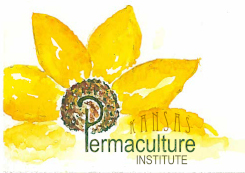Jim Schalles gave a standing-room-only lecture on Natural Building at City Sprouts on January 12. Here are my notes:
- Buildings from natural materials can last for centuries. ex: Shiba, Yemen 9-storey apartment buildings date back as far as the 3rd century, many to the 16th century.
- The oldest European structure in the US is in Santa Fe, built 1626. Its clay plaster was redone by the community every few years, but once they tried concrete plaster to try to reduce maintenance, and instead of lasting for decades it started falling apart in a few years.
- Taos Pueblo and Mesa Verde are much older.
- 1/3 of UNESCO world heritage sites are made of earthen materials, and 1/3 of the world's population still lives in earthen structures.
- Cob homes in the UK date to 1539. Light straw clay timberframe buildings in Germany, Switzerland, and Austria are usually coated with limestone plaster.
- The first strawbale homes in the world were in the Nebraska panhandle, 1903 and are still in good condition.
- Modern houses are on life support, dependent on HVAC. Earthen buildings can go indefinitely without electricity.
- Wood frame construction is inappropriate far from forests.
- "Green building" tends to use modern materials with high embodied energy, while natural/earthen building has low embodied energy.
- "vernacular architecture" is based on local needs, materials, and traditions.
- Insulation vs. thermal mass: usually add mass to the inside of the insulation. Central air heating and cooling makes no sense since air has little thermal mass.
- Hempcrete will make a lot of sense once it's legal...
- Solar chimney: for example the cupola on Victorian houses passively ventilates the whole house when windows are opened.
- Earthen concrete consists of a binder, aggregate, and fiber. Sand should have "tooth" (sharp edges). Clay is a great binder as long as it stays dry. Rebar in an earthen wall will condense moisture inside the wall and rot. Earthen concrete is very time intensive: for $150 materials, expect $3000 in labor.
- Rubble trench foundation with a french drain can be shallower than the frost line; it doesn't heave because of the gaps between rocks.
- Curved walls are often stronger than straight ones, resistant to falling over.
- A cob floor can be put on top of a plywood or OSB subfloor for thermal mass, sealed with hardening oil.
- Adobe is the same as cob, but in bricks, so construction is quicker. Not safe in seismic zones. Walls get thicker over time as layers of mud plaster are added.
- Both load-bearing strawbale and infill are code approved in Nebraska. Light clay straw construction: remove the plywood forms and reuse the same plywood repeatedly.
- Framing with round wood instead of dimensional lumber increases the wood's strength. Not currently code approved because it's not graded and might be rotten, etc.
- Timber frame construction: no metal joinery
- Cob is not code in the US, but some counties have no building codes.
- Log in to post comments





Comments